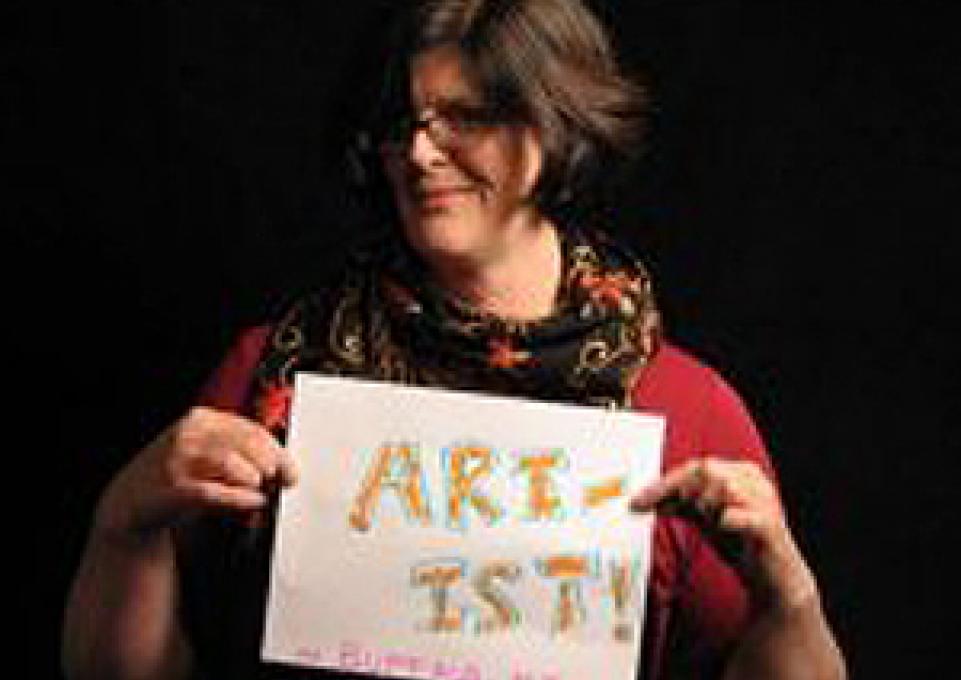
Meg Knowles, assistant professor of communication, has produced more than 40 short documentary films. She describes herself as an “experimental and documentary media artist, using film and video to explore the intersections of past, present, and future in both the personal and collective memory/imagination.”
Knowles’ first feature-length film, Runaway, is perhaps her most personal and poignant work. She recaptures the events of the summer of 1973, when Content, Knowles’ 14-year-old sister, disappeared from a horse-riding camp. She directed it, and Brian Milbrand, technical assistant in the Communication Department, and Courtney Grim, associate professor for humanities at Medaille College, produced it.
Runaway premieres on April 19 at 7:00 p.m. at the Burchfield Penney Art Center as part of the “Consider the Alternatives” documentary film series.
What inspired you to tell this story?
Brian [Milbrand] was fascinated by the story and convinced me that I should make a documentary about it. At my retrospective screening at Squeaky Wheel [a Buffalo-based media arts center] last year, when I showed “A Part of the Gods,” an earlier film about my sister’s work as an exotic dancer, there was a very strong audience response to her story. It encouraged me that people would be interested in the story of Content’s disappearance.
This is a story in my family that no one ever discussed. My parents were typical WASPs. You didn’t talk about problems and bad experiences, yet it was a seminal event in my life.
Describe the family dynamics during that period of your childhood.
That summer, Content was 14 and I was 12. Our family was close. My mother had taught music at the University at Buffalo in the 1960s, and, in 1972, worked in the Educational Communications Center at UB. My father was an interior designer. They were very open-minded and artsy. As a result, we dressed differently from other kids as school. We were oddballs in the farm community we lived in at the time.
My sister wanted to be part of the counterculture—she had a poster of Woodstock in her room. Even when she was 13, she had friends in college. She was very smart and dynamic, an unusual person with a big personality. She was intrigued with Haight-Ashbury and “the summer of love,” and that is where she headed after running away.
I think she wasn’t so much running away from something as running toward something. She was ready for her life to start and had no time to wait.
What happened that summer?
Our parents sent us to this two-month-long horse-riding camp in Vermont that the Nixon daughters had gone to. Content loved horses, but I think she didn’t like the camp. It had a lot of rules, was very conservative, and a lot of upper-crusts kids. She wasn’t feeling it. She snuck out in the night and hitchhiked to Boston, then New York City, then Los Angeles and San Francisco where she moved into a White Panthers commune and co-op.
For a long time, I thought it was my fault that she ran away—we had gotten into a fight the day before she left. I didn’t know she was going. It was a big surprise.
Describe the filming of Runaway.
It starts out being about a family with a missing child. I taped interviews with my mother and my sister, my younger brother, and other family members over the course of eight months. [Knowles’ father is deceased.] We do not all have the same recollection of that time; so really, the documentary is an exploration of the family dynamics and memory. This isn’t just about facts, but seeing an event from very different perspectives.
The film took three years to make. We followed the path Content took to Los Angeles; she hitchhiked through Big Sur, so we went there. We went to the camp in Vermont. We re-enacted some scenes and used symbolic elements for visuals, such as a guitar. Content took a guitar with her. She couldn’t play it, but thought she would meet the kind of people she wanted to meet that way. She ended up living with members of the band “Orchestra Luna” in Boston for a week or so. We hope to use some of their music in the film.
We also filmed in Austin, Texas, which is more about Content’s life now. She works as musical director, composer, and performer for alternative musical theater. We filmed some of my sister’s musical performances and also scenes between my sister and my mother today.
Have your other films had an autobiographical component? What are some of the issues your films have focused on?
Roughly half are autobiographical. I did one documentary on the AIDS crisis in the early 1990s. I had worked with ACT-Up documenting AIDS protests. I did a five-minute piece, Walk, which is my most viewed film, about my cat dying. It was really about how things pass us by in life when we are focused on other things.
Some of the issues I’ve focused on include women in prison in Canada, women who dress as men, and mental illness.
How did your sister’s disappearance affect you and your family?
My parents thought that my brother and I would not be upset if they never referred to my sister’s disappearance. I even stayed at the camp for the rest of the summer while Content [pictured above, left] was still missing. Her disappearance was a large emotional experience for me.
When I started the Runaway project, my mother pulled out a sheaf of letters friends and family had written to her that summer. It was emotional to read them—their offers to help in any way they could.
My sister made an impact on people. She still does. She is well known in Austin as a performer, musician, composer, musical director, and animal advocate. Her motto is “Art is a lie that tells the truth.”
